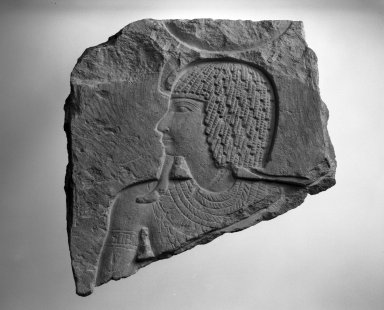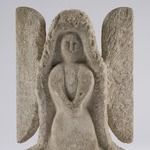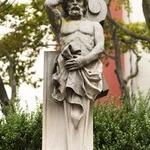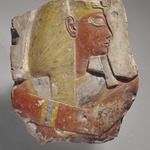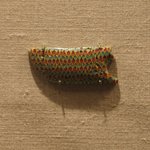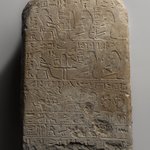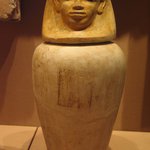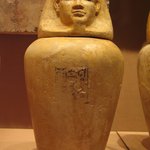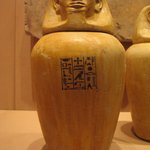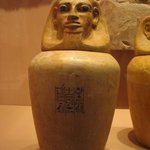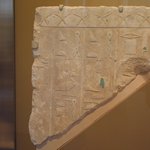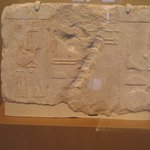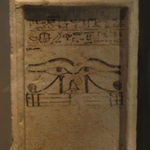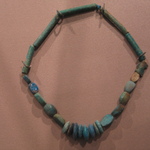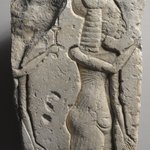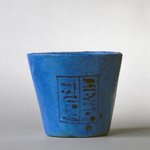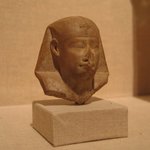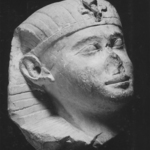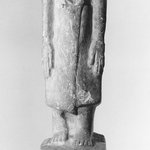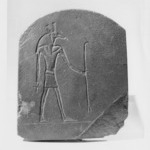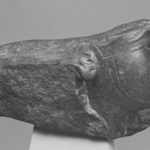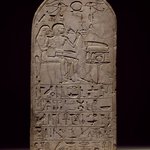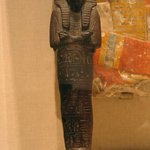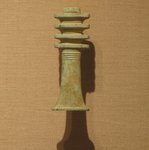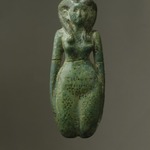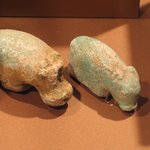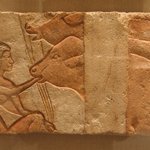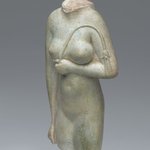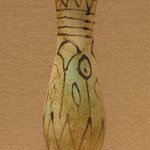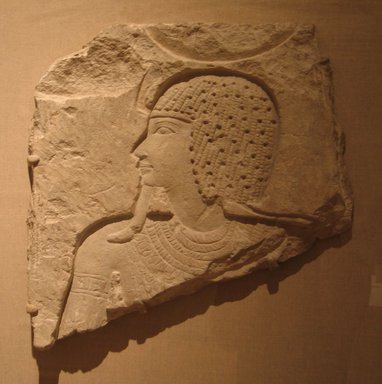
Sunk Relief of a God or Deified King
Egyptian, Classical, Ancient Near Eastern Art
On View: 19th Dynasty to Roman Period, Martha A. and Robert S. Rubin Gallery, 3rd Floor
The identification of this figure is based on his long, curved beard and the remains of a solar disk resting immediately above his head in the manner of a crown. Two stylistic details that occur sporadically in various periods are the hollow drilling of the hair curls and the sculptural demarcation of the eye's iris
MEDIUM
Limestone
DATES
ca. 874–773 B.C.E.
DYNASTY
Dynasty 22
PERIOD
Third Intermediate Period
DIMENSIONS
17 1/8 × 16 15/16 × 1 15/16 in. (43.5 × 43 × 5 cm) (show scale)



COLLECTIONS
Egyptian, Classical, Ancient Near Eastern Art
ACCESSION NUMBER
75.167
CREDIT LINE
Charles Edwin Wilbour Fund
CATALOGUE DESCRIPTION
Limestone, sunk relief representation of a god, facing left; he wears a short wig (some curls are drilled), a fillet with uraeus whose streamers appear at back of neck over the far shoulder; a curved false beard, broad collar, armlet, and feathered halter complete his costume; above his head are the remains of what may be a sun disc.
Condition: Piece missing from top, left hand corner; top, center and right-hand corner chipped; one crack runs from preserved arm through top of beard, into chin, through the lips, eye, brow, wig, and sun disc beyond; a second break run diagonally down left edge and meets the first and the curled tip of the beard. There are old large chips along the lower edge and several surfaces are scratched.
EXHIBITIONS
MUSEUM LOCATION
This item is on view on the 19th Dynasty to Roman Period, Martha A. and Robert S. Rubin Gallery, 3rd Floor
CAPTION
Sunk Relief of a God or Deified King, ca. 874–773 B.C.E. Limestone, 17 1/8 × 16 15/16 × 1 15/16 in. (43.5 × 43 × 5 cm). Brooklyn Museum, Charles Edwin Wilbour Fund, 75.167. Creative Commons-BY (Photo: Brooklyn Museum, CUR.75.167_wwg8.jpg)
IMAGE
installation, West Wing gallery 8 installation, CUR.75.167_wwg8.jpg. Brooklyn Museum photograph, 2006
"CUR" at the beginning of an image file name means that the image was created by a curatorial staff member. These study images may be digital point-and-shoot photographs, when we don\'t yet have high-quality studio photography, or they may be scans of older negatives, slides, or photographic prints, providing historical documentation of the object.
RIGHTS STATEMENT
Creative Commons-BY
You may download and use Brooklyn Museum images of this three-dimensional work in accordance with a Creative Commons license. Fair use, as understood under the United States Copyright Act, may also apply.
Please include caption information from this page and credit the Brooklyn Museum. If you need a high resolution file, please fill out our online application form (charges apply).
For further information about copyright, we recommend resources at the United States Library of Congress, Cornell University, Copyright and Cultural Institutions: Guidelines for U.S. Libraries, Archives, and Museums, and Copyright Watch.
For more information about the Museum's rights project, including how rights types are assigned, please see our blog posts on copyright.
If you have any information regarding this work and rights to it, please contact copyright@brooklynmuseum.org.
RECORD COMPLETENESS
Not every record you will find here is complete. More information is available for some works than for others, and some entries have been updated more recently. Records are frequently reviewed and revised, and we welcome any additional information you might have.
